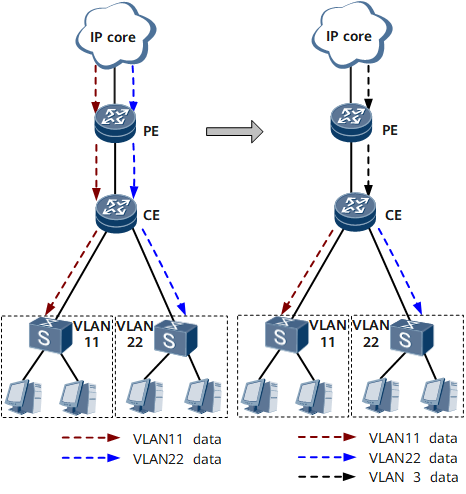Configuring Layer 2 Multicast Instances
If users in different VLANs or VSIs request for the same multicast group's data from the same source, configure a Layer 2 multicast instance on the Layer 2 device.
Context
In conventional multicast on-demand mode, if users of a Layer 2 multicast device in different VLANs or VSIs request for the same multicast group's data from the same source, the connected upstream Layer 3 device has to send a copy of each multicast flow of this group for each VLAN or VSI. Such implementation wastes bandwidth resources and burdens the upstream device.
To resolve these issues, configure a Layer 2 multicast instance on the Layer 2 multicast device. Then, the Layer 2 device requests for only one copy of the group's flow for all such users from the connected Layer 3 device.
- Multicast data can be replicated on a VPLS network and be replicated from a VPLS network to a VLAN.
- Channels that consist of multiple multicast groups can be specified for the Layer 2 multicast instance, facilitating the management of replicated multicast data flows.
For example, on the network shown in Figure 1, users in VLAN 11 and VLAN 22 request for data of the same multicast group from the same source. In this scenario, create a VLAN (for example, VLAN 3) and configure the VLAN as a multicast VLAN on the CE. Associate VLAN 3 with VLAN 11 and VLAN 22. Then, the CE requests for only a single copy of the data flow from the PE, and replicates separate copies for VLAN 11 and VLAN 22.
- Configuring Layer 2 Multicast Instances for VLAN or VSI Users
- If users in different VLANs or VSIs request for the same group's data from the same source, configure a Layer 2 multicast instance on a device, allowing the device to request for only one copy of each multicast data flow for such users from the upstream device.
- Verifying the Layer 2 Multicast Instance Configuration
- After configuring a Layer 2 multicast instance, verify the configuration.

